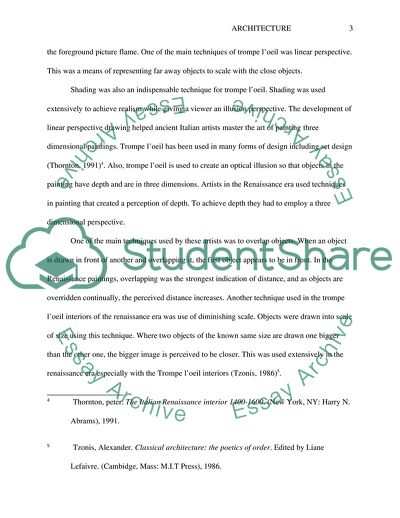Cite this document
(Trompe LOeil and the Interior Essay Example | Topics and Well Written Essays - 1500 words, n.d.)
Trompe LOeil and the Interior Essay Example | Topics and Well Written Essays - 1500 words. https://studentshare.org/architecture/1775792-tromp-loeil-the-interiorrenaissance-what-were-the-pictorial-techniques-employed-by-renaissance-architects-in-composing-tromp-l-oeil-interiorsand-what-were-their-resulting-spatial-effects
Trompe LOeil and the Interior Essay Example | Topics and Well Written Essays - 1500 words. https://studentshare.org/architecture/1775792-tromp-loeil-the-interiorrenaissance-what-were-the-pictorial-techniques-employed-by-renaissance-architects-in-composing-tromp-l-oeil-interiorsand-what-were-their-resulting-spatial-effects
(Trompe LOeil and the Interior Essay Example | Topics and Well Written Essays - 1500 Words)
Trompe LOeil and the Interior Essay Example | Topics and Well Written Essays - 1500 Words. https://studentshare.org/architecture/1775792-tromp-loeil-the-interiorrenaissance-what-were-the-pictorial-techniques-employed-by-renaissance-architects-in-composing-tromp-l-oeil-interiorsand-what-were-their-resulting-spatial-effects.
Trompe LOeil and the Interior Essay Example | Topics and Well Written Essays - 1500 Words. https://studentshare.org/architecture/1775792-tromp-loeil-the-interiorrenaissance-what-were-the-pictorial-techniques-employed-by-renaissance-architects-in-composing-tromp-l-oeil-interiorsand-what-were-their-resulting-spatial-effects.
“Trompe LOeil and the Interior Essay Example | Topics and Well Written Essays - 1500 Words”. https://studentshare.org/architecture/1775792-tromp-loeil-the-interiorrenaissance-what-were-the-pictorial-techniques-employed-by-renaissance-architects-in-composing-tromp-l-oeil-interiorsand-what-were-their-resulting-spatial-effects.


